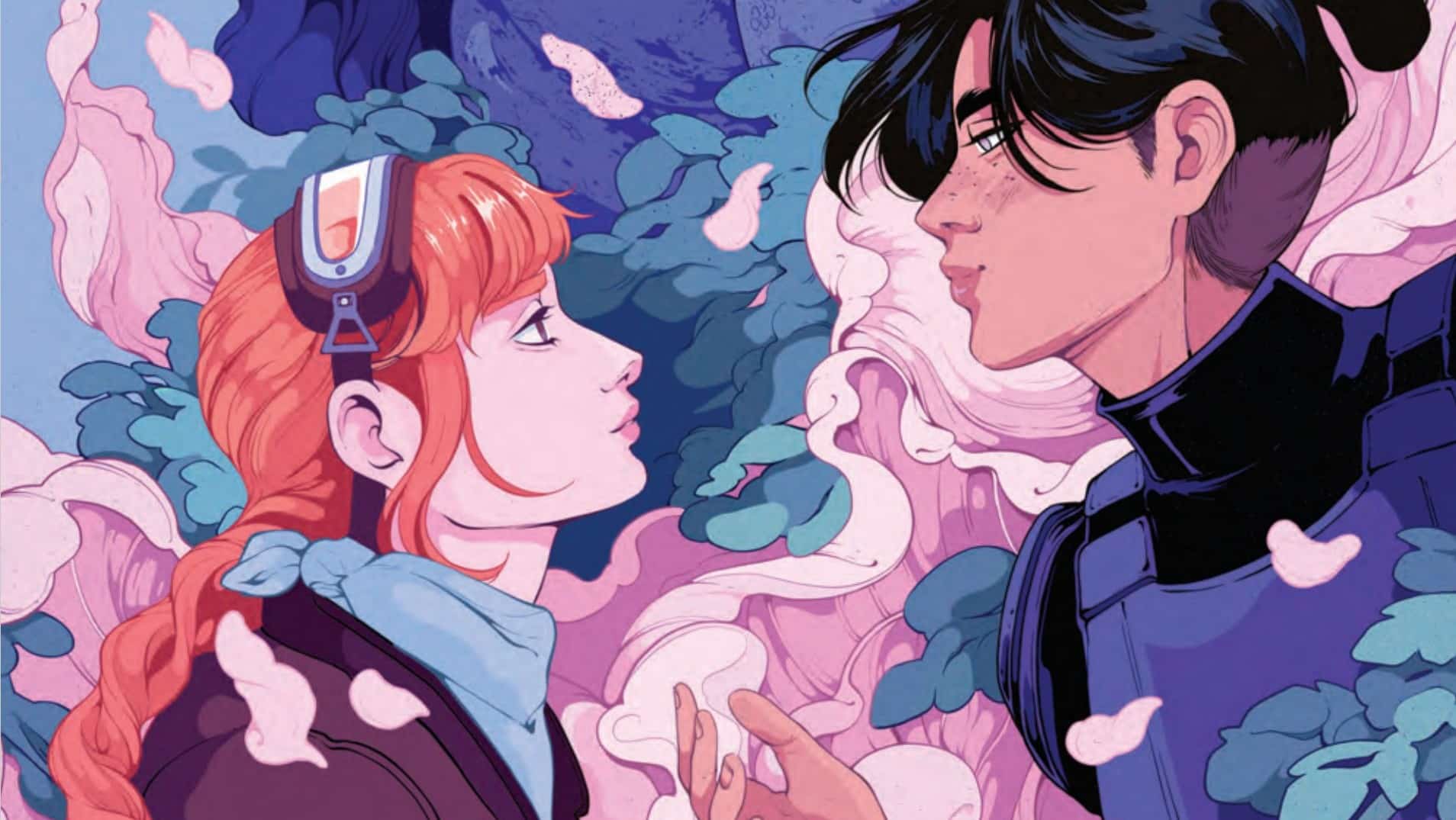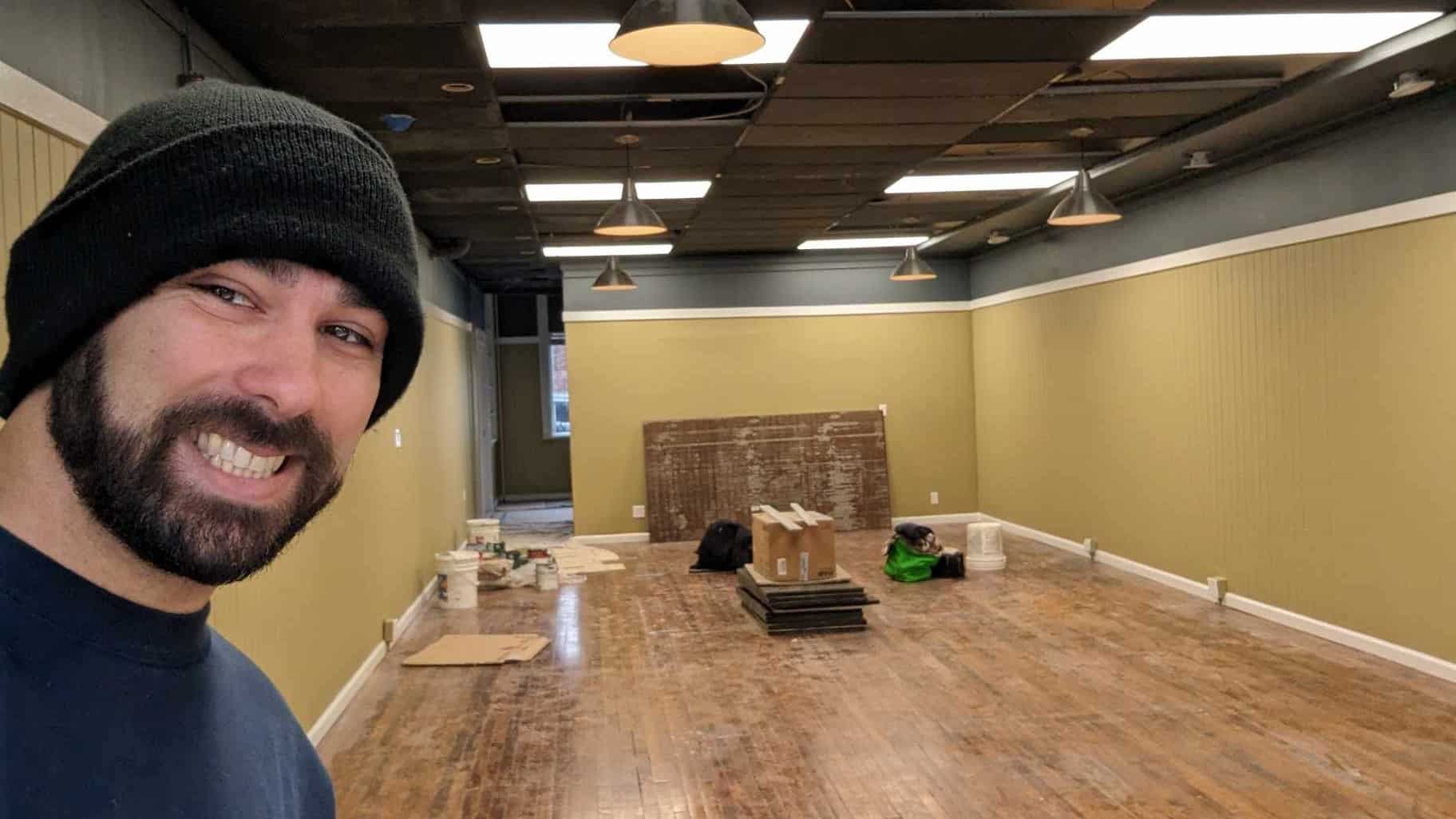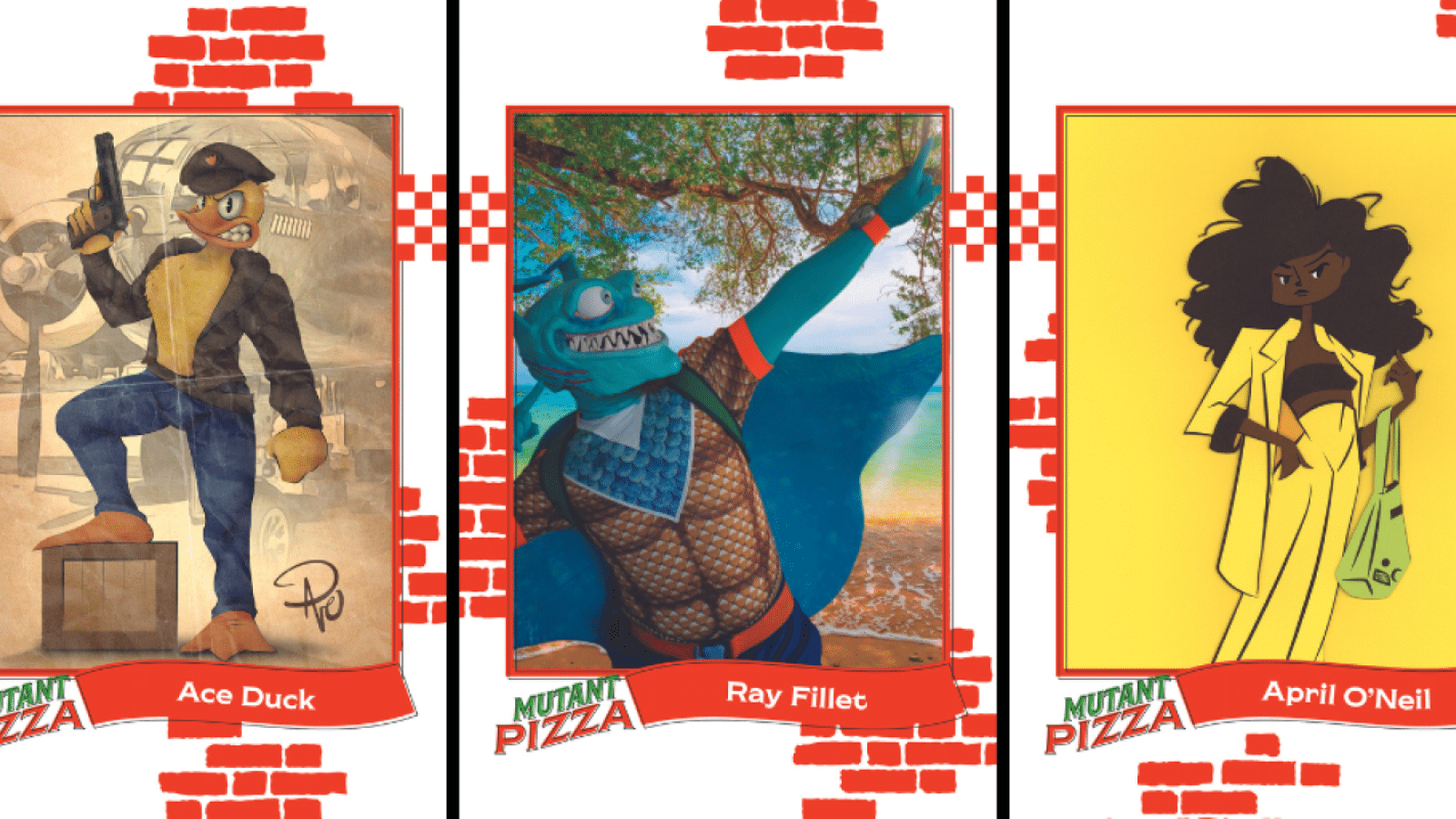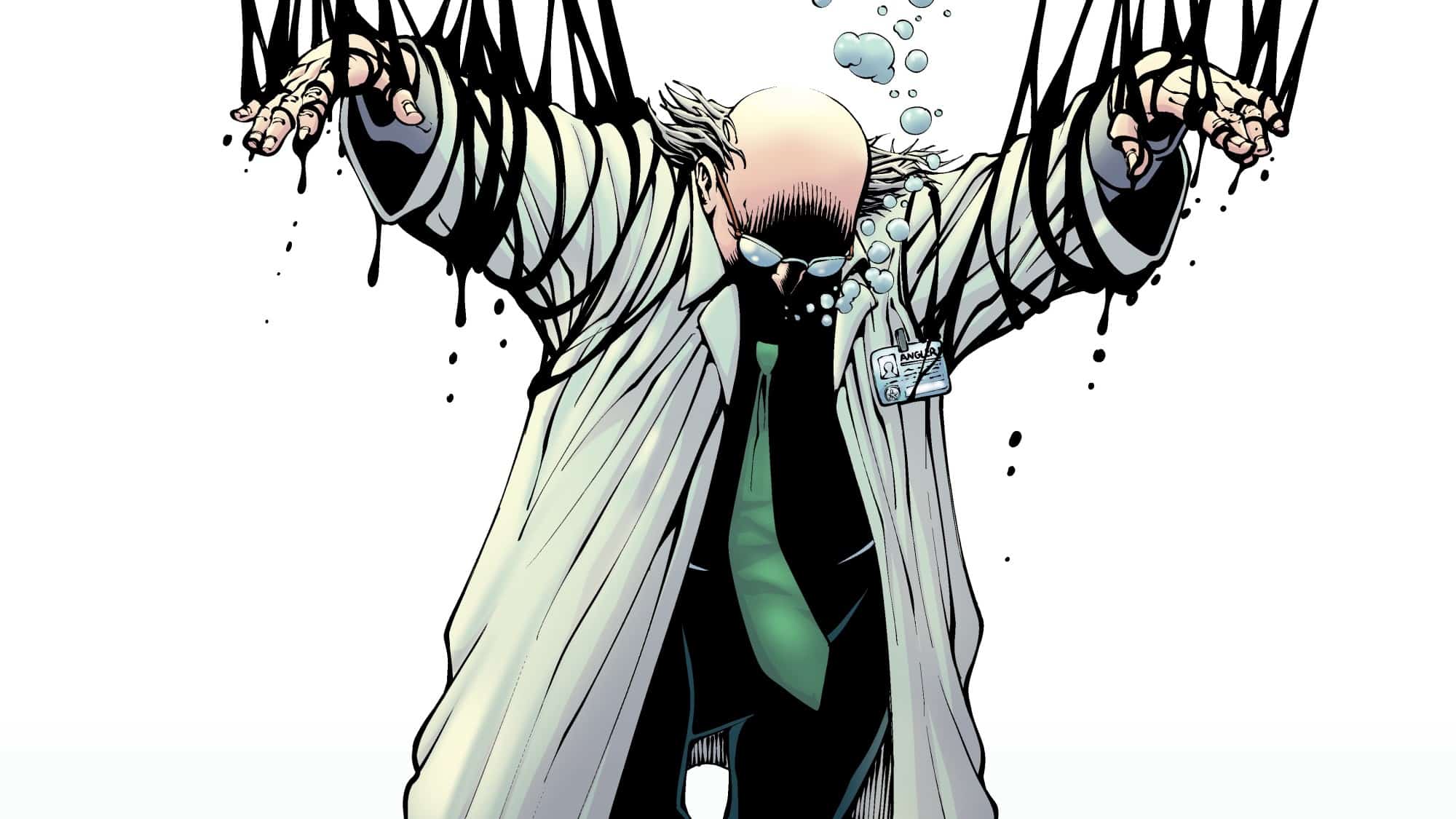
Comics have a long history of taking traditional tales and giving them new takes, whether it’s Stan Lee and Jack Kirby recasting the Norse gods as superheroic archetypes in “The Mighty Thor” or Alan Moore cramming an entire 19th-century lit class’ worth of characters into one story in “League of Extraordinary Gentlemen.”
Writer David Pepose already had one reimaging under his belt, his comic strips-as-noir, “Spencer and Locke,” when he decided to work on a project based on one of the foundational texts of modern children’s literature: “The Wizard of Oz.” We sat down with Pepose to talk about his just-launched Kickstarter for “The O.Z.” #1 — with artist Ruben Rojas, colorist Whitney Cogar and letterer DC Hopkins — to see what makes this story tick, how it fits into his body of work and what characters you should expect to see in this gritty new take on Oz.

Matt: Give us the basics of “The O.Z.”
David: “The O.Z.” is like what if “Mad Max” and “The Hurt Locker” took place in “The Wizard of Oz.” Our story reframes Dorothy Gale’s killing of the Wicked Witch of the West as something akin to a botched regime change — when Dorothy went back home to Kansas, she didn’t realize she had left Oz in the throes of a horrific power vacuum, which would devolve into years of brutal civil war.
“The O.Z.” picks up a generation later with Dorothy’s granddaughter and namesake, a disillusioned Iraq War veteran struggling to put the pieces of her life back together. But when a tornado hits their small Kansas town, our new Dorothy is going to discover her ailing grandmother’s tall tales of a magical country aren’t as rose-colored as she imagined — instead, Dorothy’s going to find the war-torn land of Oz to be both completely alien to her, as well as feeling eerily like a battlefield she never truly left.
Having to confront her own past as a soldier as well as her grandmother’s former friends like the Tin Soldier, the Scarecrow and the Courageous Lion, Dorothy’s going to have to grapple with trauma, guilt and the morality of war if she ever hopes to bring peace to the Occupied Zone … or as the locals call it, The O.Z.

Matt: You made your name with “Spencer and Locke,” a book that takes “Calvin & Hobbes” and recasts it as an adult noir. This series takes the Oz books and recasts them as a war story. What is it that appeals to you about reinterpreting children’s media?
David: I think nostalgia is something like a collective memory we all share — it’s a shared memory we have of when the world wasn’t so complicated, where things were simpler, more universal. I think it’s in part because stories like “The Wizard of Oz” are populated with these iconic archetypes — and it’s that universal quality that really draws me into telling stories like “The O.Z.”
Characters like Dorothy and the Tin Soldier are timeless, and you can use that quality to explore darker and more complex subject matter — because these icons won’t break, I think readers instinctively feel the same way, which allows us take a deeper dive into heavier themes.
Ultimately, though, it’s never based on shock value — shock can get your foot in the door for a first installment, but that’s not enough to build true investment. But because we’re able to justify the wartime themes of “The O.Z.” and really get inside Dorothy’s head as a soldier who’s trying to face her trauma and make the most moral decision in the face of combat, we’re able to deliver a narrative that has weight, but has enough wonder to keep things from being oppressive.

Matt: Were the Oz books something you read or were familiar with growing up, or was it just the movie? And how much Oz research/reading did you do to prepare for this book?
David: Like most people, I grew up with the iconic Judy Garland film, but I revisited the Oz books in college when I was taking a class on adolescent literature. I actually wound up writing a paper about how the various countries and populations of Oz served as almost a prototypical superhero universe like Marvel. … Clearly I come by all this honestly!
But the thing is, I know that most people haven’t even read the first L. Frank Baum novel, let alone the numerous sequels expanding the Oz universe, so we were very judicious in terms of what we chose for “The O.Z.” Especially because while the novels are considered in the public domain, the film is not — we quickly learned we had to use the original silver slippers rather than the classic ruby slippers, since those were an invention for Technicolor.
We definitely focus on the initial core cast of Dorothy, the Tin Soldier, the Scarecrow and the Courageous Lion, but we also cherry-picked bits of Oz mythology to flesh out the scope of this magical world, with locations like the Deadly Desert or the land of Ix. (Not to mention the inclusion of Jack Pumpkinhead, a character I couldn’t resist putting in the book.) But my watchword for this book has always been accessibility — unlike, say, “Calvin and Hobbes,” there’s such a plethora of details from the Oz mythology that could have drowned this book. But I think we’ve been able to tap into a really iconic bit of material that I think diehards and casual fans alike will find something to love.

Matt: How did you assemble your creative team on this book?
David: Back in 2018, I found Ruben Rojas responding to a call for artists on Twitter, and I was immediately blown away. Ruben’s got a style that evokes a bit of Sean Murphy, but his inking style feels nice and lush — he’s able to really thread that needle between action and expressiveness in a way that I don’t often see. I reached out to Ruben immediately with three different book concepts, and he gravitated towards “The O.Z.”
And thank goodness he did — as I’ve gotten to know Ruben more, I couldn’t imagine tackling this book with a different artist. Ruben is brilliant in terms of how he composes his panels for maximum velocity and drama, and he’s about as gifted a designer as I’ve ever seen before. He adds so much detail to his settings and his characters — when I saw his first cover with the Tin Soldier, I made Ruben a promise: Come Hell or high water, I would get this book made. Honestly, he’s too damn talented not to be shared.
Colorist Whitney Cogar and letterer DC Hopkins were both recommendations from my friend Michael Moccio, a former BOOM! Studios editor who’s now at Mad Cave. Mike and I met through the trenches of comics journalism at Newsarama, and we chat regularly — and through his experience at BOOM, he would not stop singing Whitney and DC’s praises. I met DC first at Denver Comic Con last year, and we immediately hit it off, so I knew I wanted to work with him on something — and he’s been so gracious and precise with his work on The O.Z. that he’s really elevated my storytelling.
Whitney, meanwhile, was kind of the unicorn I was looking for with this book — I’m very exacting when it comes to colors, because the right colorist can make a comic sing, but the wrong colorist can tank even the strongest artwork. When Whitney and I first started talking about “The O.Z.,” we talked a lot about the grittiness of “Mad Max: Fury Road,” but more so about the expansiveness of the Star Wars Universe — how every planet had its own unique palette, temperature and internal high concept, and how I wanted to add that sweeping sense of scale to the land of Oz. Whitney took that ball and ran with it, and I think she and Ruben are just an incredible dream team.

Matt: We got to read the first 11 pages of this book, and it is … intense. You’ve got themes of racism, PTSD and suicide right at the beginning. You’ve never shied away from heavier tones in your work, but will this eventually also bring in some of your trademark dark/wry humor, or is this going to be more of a straight drama?
David: Definitely, to a degree — I always try to find some humanity and humor to my work, but “The O.Z.” is a very different animal than my previous work with “Spencer & Locke” and “Going to the Chapel.” So much of the humor of this book comes from the absurdity of the setting — showing that the candy-coated land of Oz actually has teeth.
But I think the team that Dorothy surrounds herself with also adds that tonal texture to the mix — her back-and-forth with the Tin Soldier evokes a bit of that “Spencer & Locke” banter to me, and characters like the Wizard of Oz and Jack Pumpkinhead are going to add some nice levity to the book.
I’ve always said that beyond straight-up horror, “Spencer & Locke” is going to be the bleakest thing I ever write — tonally, “The O.Z.” is going to fit more somewhere between “:Mad Max: Fury Road” and “Star Wars: Rogue One.” We want to make sure there’s weight to this story, but more importantly, we want to make sure there’s heart.

Matt: What made you decide to go with crowdfunding for this particular project?
David: Really, it was a confluence of a lot of different things. I have a lot of friends who have had a lot of success on Kickstarter, and they’ve been press-ganging me for the better part of a year to take the plunge myself. Because Kickstarter is very much its own ecosystem, with people buying books exclusively from the platform in the same way that others buy exclusively from comics shops or Amazon. I’ve always been about trying to build our amazing readership, to invite more people to the table, and Kickstarter has always been on my agenda to do that.
But COVID of course has changed the industry in a lot of ways, and certainly crystallized my way of thinking. With the temporary Diamond shutdown and many publishers staggering their release schedules, it was just a reminder that creators need to learn to be nimble — and I think Kickstarter was the best way to solve one problem with another. I love working with traditional publishers, but I was tired of waiting for permission to create, particularly with a book as undeniably beautiful as “The O.Z.”
Kickstarter was the way to empower us as creators to take control of our work, and I’m just proud we get to introduce ourselves to the community by bringing our A-game. We’re excited to be offering some amazing rewards to our backers to give readers the most bang for their buck to go along with our 44-page first issue — we’ll be offering behind-the-scenes materials, original artwork, opportunities to be drawn into the book … and even one of three limited-edition handmade Spencer & Locke dolls. We think readers are going to love the world of “The O.Z.,” and we’re determined to go above and beyond every step of the way to earn your trust.
You can back The O.Z. #1 on Kickstarter.
Matt Lazorwitz read his first comic at the age of five. It was Who's Who in the DC Universe #2, featuring characters whose names begin with B, which explains so much about his Batman obsession. He writes about comics he loves, and co-hosts the creator interview podcast WMQ&A with Dan Grote.






